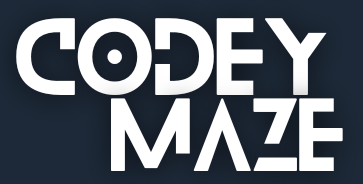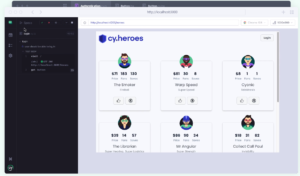Animation is a powerful tool in web design. It can help bring your website to life and make it more engaging for your visitors. In this article, we will discuss six animation tools that can help you step up your front-end game and create stunning animations for your website.
Whether you are a beginner or an experienced developer, these tools will help you take your animations to the next level. So, let’s get started!
GSAP (GreenSock Animation Platform)
GSAP is a powerful JavaScript library for creating high-performance animations. It offers a wide range of features and is known for its ease of use.
GSAP allows you to create complex animations with simple code, making it a popular choice among developers.
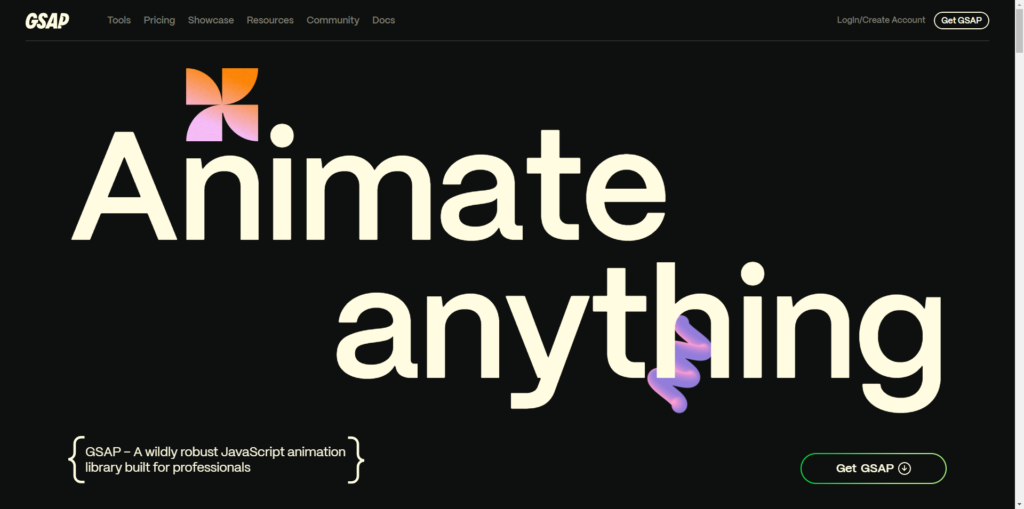
Pros:
- Highly optimized for performance
- Straightforward and easy-to-understand
- Strong community and extensive documentation
- Scalable and can handle both simple and complex animations
- Excels in animating SVGs
- Can be used alongside other libraries or frameworks like jQuery or React
Cons:
- Has a learning curve
- A file size to consider
- Some features tied to a paid membership
- Potential dependency concerns for smaller projects
Anime.js
Anime.js is a lightweight JavaScript animation library that works well for both beginners and experienced developers.
It supports CSS properties, SVG, DOM attributes, and more. Anime.js provides a simple API for creating smooth and complex animations.
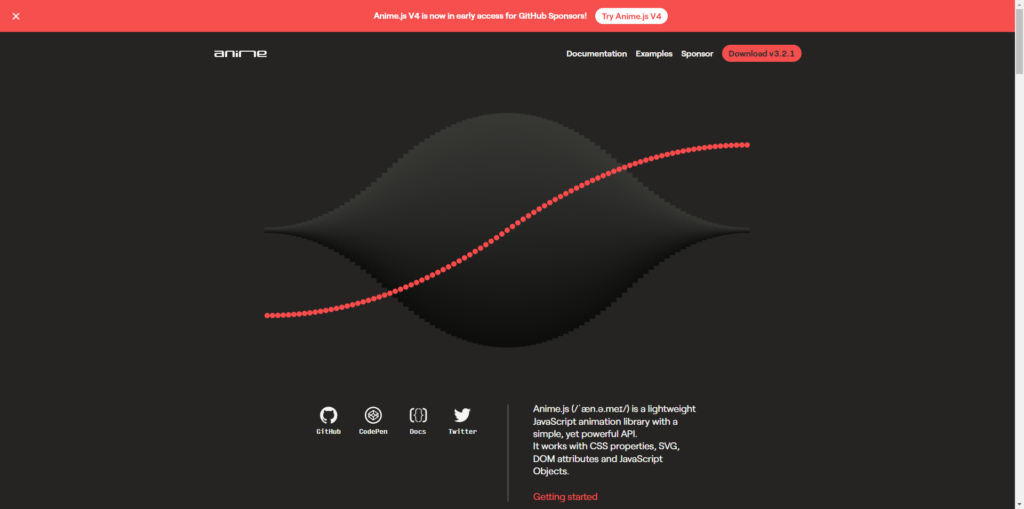
Pros:
- lightweight and versatile JavaScript animation library
- Simple syntax
- offers compatibility with CSS, SVG, and more
Cons:
- Slightly steeper learning curve for complex animations
- Community may not be as extensive as some other animation libraries
Lottie
Lottie is a library created by Airbnb that renders Adobe After Effects animations in real-time.
It uses JSON files exported from After Effects to create interactive animations for the web and mobile applications. Lottie is widely used for creating engaging and dynamic user interfaces.

Pros:
- Simplified web and mobile animation integration
- Fostering engaging user interfaces
Cons:
- Performance might be impacted by the complexity of animations
- Intricate control over individual elements may be limited compared to native implementations
Three.js
Three.js is a popular JavaScript library for creating 3D animations and visualizations.
It provides a high-level API for working with WebGL, making it easier to create stunning 3D graphics directly in the browser.
Three.js is ideal for front-end developers interested in adding 3D elements to their web projects.
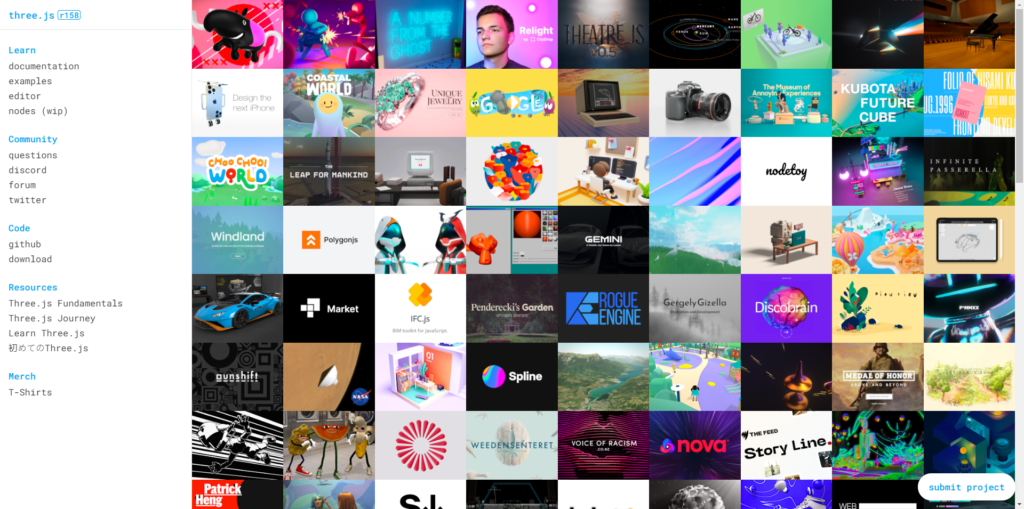
Pros:
- Offers a feature-rich API
- Excellent cross-browser compatibility
Cons:
- May be challenging for beginners
- Rendering very complex scenes may impact the performance
Velocity.js
Velocity.js is a fast and lightweight animation engine for jQuery and JavaScript. It focuses on performance and provides a simple syntax for creating animations.
Velocity.js supports a variety of CSS properties and transformations, making it a good choice for front-end developers who want to create smooth animations with minimal effort.
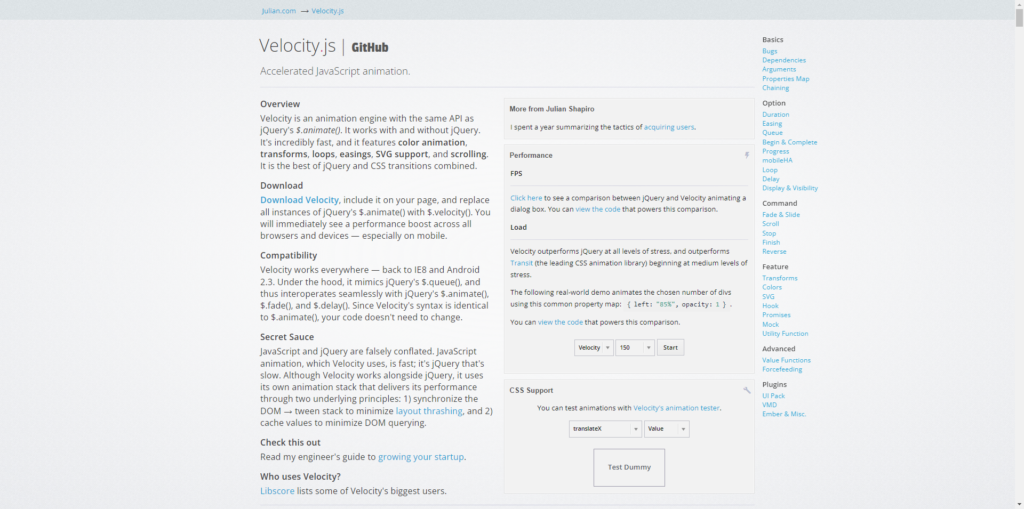
Pros:
- Lightweight and fast animation library with a simple syntax
- Provides smooth animations
- Compatibility with various CSS properties
Cons:
- May have a smaller community
- It is primarily focused on animation, lacking some advanced features found in comprehensive frameworks
PixiJS
PixiJS is a 2D rendering engine that enables the creation of interactive graphics and animations. It is particularly well-suited for game development and multimedia applications.
PixiJS uses WebGL and falls back to HTML5 canvas rendering, ensuring excellent performance across different platforms.

Pros:
- Powerful 2D rendering engine with WebGL support
- Enables fast and efficient creation of interactive graphics
Cons:
- Might have a steeper learning curve for beginners
- Focus on 2D graphics may limit its suitability for projects requiring extensive 3D capabilities
Conclusion
Each of these tools has its own strengths and use cases, so choosing the right one depends on your specific requirements and preferences. Experimenting with these tools will allow you to find the one that best fits your front-end development needs.
